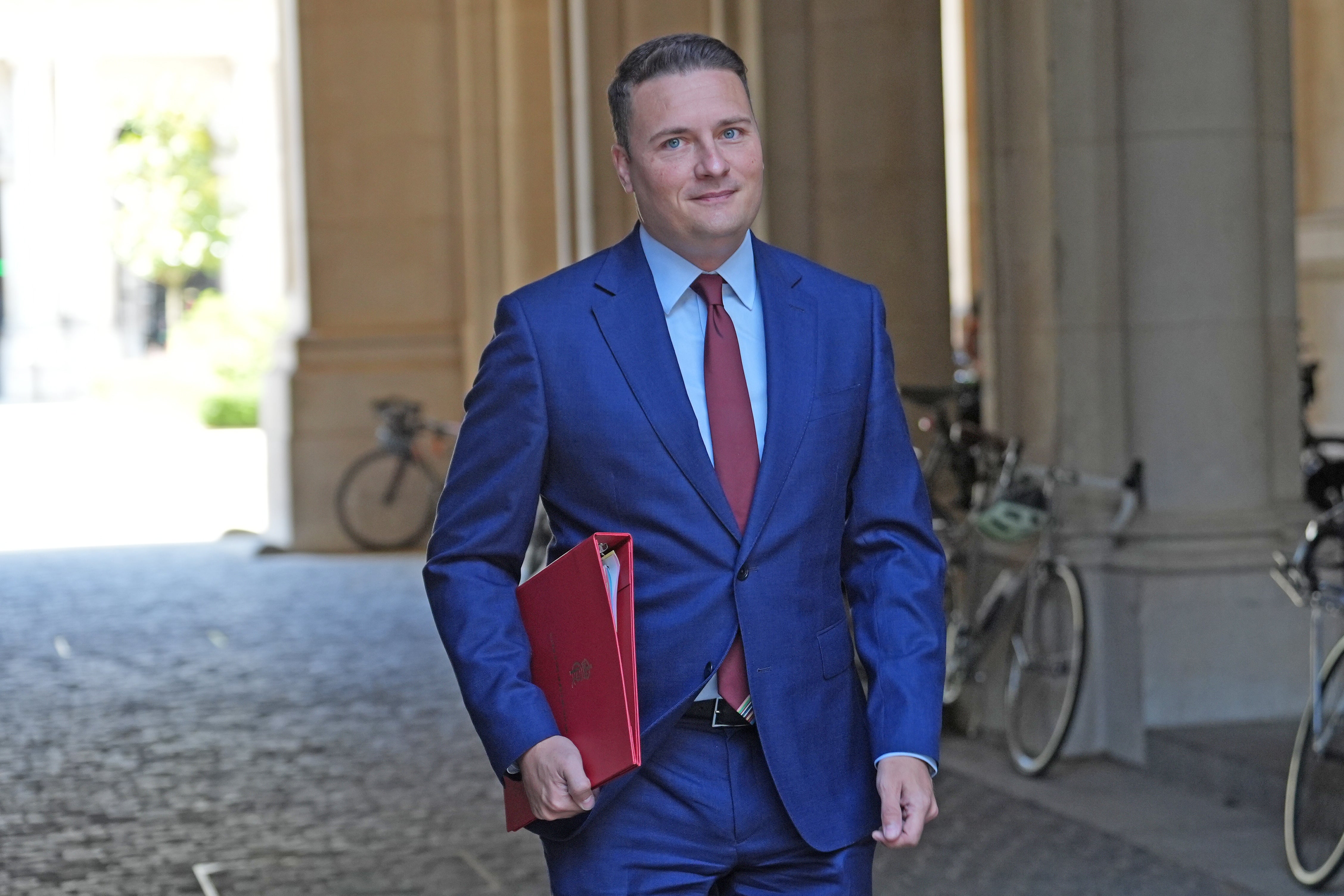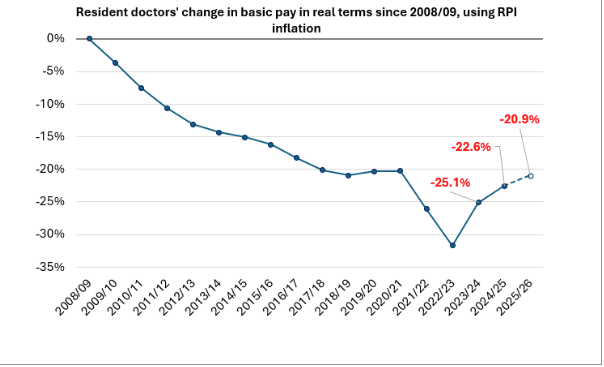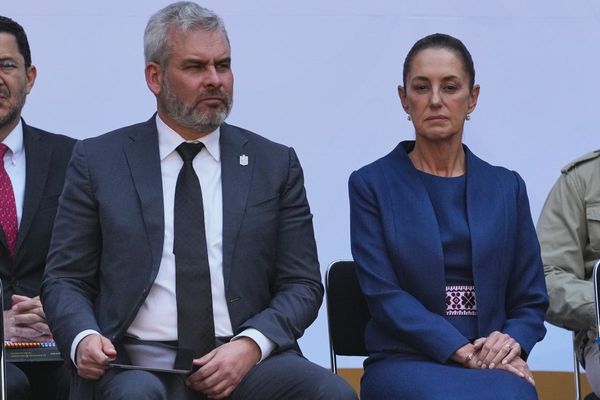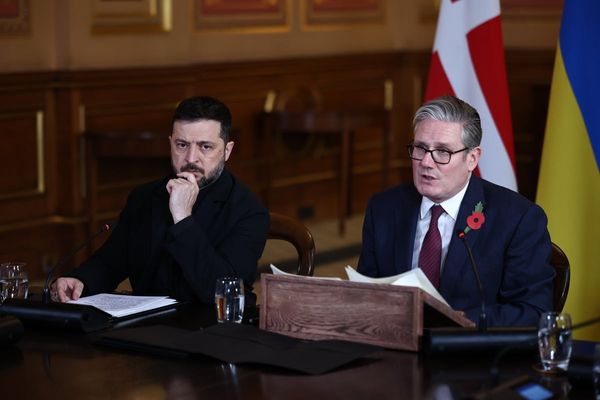Resident doctors will strike in the run-up to Christmas, the British Medical Association (BMA) has confirmed. The five-day strike will see the staff walk out from 7am on 17 December until 7am on 22 December.
It marks the 14th strike by doctors since March 2023, following on from a similar five-day walk out last month.
The BMA says the government has failed to “put forward a credible plan to fix the jobs crisis for resident doctors” adding that there has been no “credible offer on jobs or pay”.
“However, these do not need to go ahead. Gradually raising pay over a few years and some common-sense fixes to the job security of our doctors are well within the reach of this Government,” said Dr Jack Fletcher, chair of the BMA's resident doctors committee (RDC).

Resident doctor pay has rise almost 30 per cent over the past three years, including 22 per cent since Labour came into power. However, the BMA says that doctors need an extra 26 per cent increase over the next few years to restore their pay after inflation since 2008 has seen it erode in real terms.
Health secretary Wes Streeting described the move as a “cynical attempt to wreck Christmas.”
“After a 28.9 per cent pay rise, the government offered to create more jobs and put money back in resident doctors’ pockets. The BMA rejected it out of hand, refused to put the offer to its members, blocking a better deal for doctors,” he said.
Resident doctors, formerly known as junior doctors, are qualified doctors in their first years of training. A fifth are completing their first two foundation years, while the remainder are in core or speciality registrar training.
The agreed salary for those on foundation training is between £38,831 and £44,439, with specialist training salaries rising to £73,992. That includes the 5.4 per cent increase awarded earlier this year, but does not include London weighting.
The BMA wants pay boosted to between £47,308 and £54,274 for foundation doctors, and up to a maximum of £90,989 for residents in specialist training at the highest end, over a flexible negotiated period.
How much are residents paid compared to other doctors?
Resident doctors’ current salary of between £38,831 and £44,439 a year is for a 40-hour week, and does not include extra pay for working more hours or night shifts, which varies significantly per person.
Doctors in core or specialist training can earn £52,656 a year, going on to earn up to £73,992 a year at the highest end.
The government has said that this sits at around an average of £54,300 across resident doctors of all stages of training.
Meanwhile, consultants, who have specialist knowledge in a particular medical field, earn a basic salary of between £105,504 and £139,882 a year.
After two years of foundation training, it generally takes around five to eight more years before doctors can become eligible for consultant roles, though the wait can be longer.
Nurses start at a lower salary band, around £31,049 for a newly qualified nurse, according to the NHS’ Agenda for Change.
This can go up to £54,710 for ward managers, and £96,0000 for the most senior specialist nurses.
Dentists employed by the NHS start at £42,408 a year and progress to £94,000 for the most senior roles and £105,000 for dental consultants.
This puts resident doctors in a similar starting range to dentists, and 22 per cent higher than nurses.
How far is pay behind inflation?
Inflation is central to the BMA’s demands, arguing that even after the uplift, pay for resident doctors has been eroded by 20.9 per cent since 2008.
With the current 5.4 per cent uplift, the BMA says doctors won’t see their pay restored for 12 years, or until 2036.
Instead, resident doctors are seeking a multi-year deal to restore their pay, requiring a pay rise of at least 29 per cent.

However, the BMA’s figures are calculated using retail prices index (RPI) inflation, which is no longer used as a national statistic. This includes factors such as housing prices, council tax, and mortgage rates.
Using the official measure of inflation, consumer prices index (CPI), the Nuffield Trust calculated that doctors’ pay has fallen by a more moderate 4.7 per cent in the same period.
In cash terms, excluding inflation, foundation-year resident doctors have seen a substantial pay boost in recent years.
First year foundation doctors were paid just £29,384 in 2022; which means the new 5.4 per cent uplift amounts to an overall 32 per cent pay rise on that figure.
While 2022 saw a four-decade-high rate of inflation, and doctors’ salaries had already been falling behind, this is a more sizeable increase than seen by other public sectors.
Nurses, for example, have seen starting salaries rise by just 14.8 per cent in the same period, less than half the rate of resident doctors.
Doctors’ pay compared to other public sectors
Doctors and medical staff provide essential public services. So, how does their pay compare to police and firefighters?
According to the Firefighters Union (FU), a trainee will earn around £28,265 a year, bumped up to £37,675 once they become a fully “competent” firefighter in 1-3 years.
At this point, overtime is paid at £25.80 per hour. Firefighters generally work a two-day, two-night shift pattern, with four days off in between.
The highest salary for “area manager” firefighters is at £69,283, according to the FU; not including London weighting.
Meanwhile, figures from the Police Federation suggest that constables begin on £29,907 a year (without London weighting), rising to £48,000 for the highest pay band.
Chief Inspectors can earn as much as £72,700 in London at the highest range.
This suggests that resident doctors start at a moderately higher salary range, with more potential for upward movement. But comparing these fields of work is a challenge.
£70,000
average medical student debt (BMA)
average medical student debt (BMA)
Doctors must complete several years of medical school before qualifying.
This saddles many doctors with debt before entering the workforce - something which is not a requirement for other emergency services, including firefighters and police.
Low doctor pay compared to other countries
In France, most doctors are self-employed, except for a minority who are directly employed by hospitals. Starting salaries are already expected to be around £3,400 per month, tallying at £40,800 a year.
The average salary for a general practitioner is £84,000, according to data from the public health service. This can go up to as high as £350,000 for radiotherapists.
In Canada, low starting salaries for doctors are around £46,000, according to national data. But average salaries sit around £122,000, with peak pay at £236,000 a year.
The US has the highest salaries for doctors overall, with significant variation by state. Since private healthcare pay is unstandardised, it is hard to directly compare starting salaries.
But resident doctors in the US are paid on average between £51,000 and £86,000, according to Glassdoor, with some surgeons earning upwards of £500,000 a year.
It is important to note that the NHS is relatively unique because it is funded by the taxpayer.
Canada has a similar system, which covers 70 per cent of healthcare spending, known as Medicare. Most doctors are paid in a fee-for-service model, not a set salary.
France has a reimbursement model where patients mostly pay upfront, and may be partially or fully refunded by the state.
And the US has some form of free health insurance, known as Medicaid; but this covers a shrinking fraction of the population. Ultimately, doctors are privately paid through forms of insurance, even if the state subsidises some healthcare.
In this way, the UK is somewhat unique in how the taxpayer shoulders the burden of public healthcare salaries, excluding private doctors.
New cancer treatment could prevent patients needing ‘devastating’ surgery
Cancer treatment that allows patients to avoid surgery given approval for NHS use
UK growth facing headwinds from tax hikes and spending cuts – OECD
Little-known oil could be driving obesity – and is in more foods than you think
What having a beer belly really says about your health
Warning over weight loss jab shortage as obesity set to double by 2030







